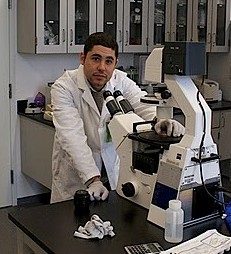Posted by George Shaw on Nov 20, 2011

Progress update:
The gene thought to cause FSHD, Double Homeobox Protein 4 (DUX4), is unusual because it is encoded within each unit (D4Z4) of large arrays present on chromosomes 4 and 10. Normally the arrays are longer than 10 units and do not produce stable DUX4 transcripts. In people with FSHD, one of the chromosome 4 arrays becomes shortened and DUX4 transcripts and protein can be detected from cultured muscle cells and tissue. RNA and protein, however, are only present in a small fraction of muscle cells suggesting that additional constraints limit DUX4 production. I am interested in discovering ways to assay transcriptional activity of D4Z4, and to understand the factors that lead to activation of DUX4. I have developed multiple assays that allow us to understand the regulation of D4Z4 sequences in the context of development and myogenesis. I have identified signaling pathways that modulate transcription from D4Z4 and that can enhance or reduce the expression of DUX4.
—Gregory Block
See Grant: Mechanism of Wnt Signaling in Facioscapulohumeral Muscular Dystrophy





Connect with us on social media